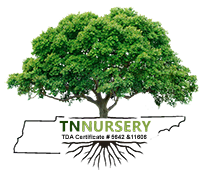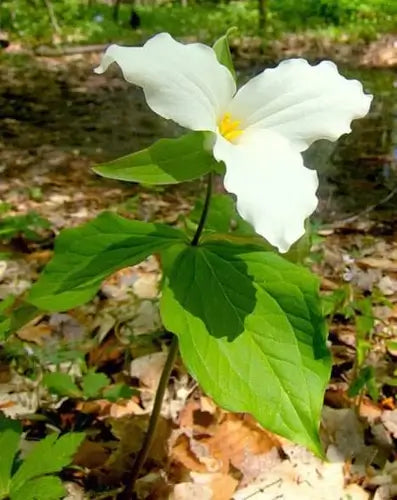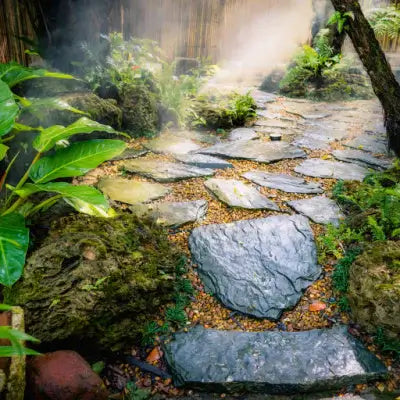Planting for Butterflies
Creating a butterfly-friendly garden is a delightful and rewarding endeavor that contributes significantly to conserving butterflies and pollinators. This guide delves into the diverse aspects of designing and maintaining a garden that attracts and sustains these beautiful creatures.
Understanding Butterflies and Their Needs
Butterflies, like all pollinators, play a crucial role in the ecosystem by aiding in the pollination of many plants. Understanding their life cycle and what they require at each stage is essential to creating a garden that caters to their needs.
The Life Cycle of Butterflies
The butterfly's life cycle comprises four stages: egg, larva (caterpillar), pupa (chrysalis), and adult. Each location has different needs. For example, caterpillars are often plant-specific eaters, requiring certain host plants to thrive, while adult butterflies feed primarily on nectar.
Selecting the Right Plants
The foundation of a butterfly-friendly garden is its plant selection. The key is to choose various nectar-rich flowers and specific host plants for caterpillars.

Nectar-Rich Flowers
Butterflies are attracted to bright, fragrant flowers with ample nectar. Some popular choices include milkweed, lavender, coneflowers, and zinnias. Planting flowers in clusters is beneficial to create a more substantial visual impact, making it easier for butterflies to locate the garden.
Host Plants
Host plants are essential for caterpillars. Each butterfly species has specific plants that its caterpillars feed on. For example, monarch caterpillars feed exclusively on milkweed. Including these plants in your garden ensures butterflies can complete their life cycle.
Designing the Garden
A thoughtfully designed garden attracts more butterflies and supports their well-being. Consider the following when planning your garden:
Sunlight and Shelter
Butterflies are sun-loving creatures and are most active in sunny, open spaces. Ensure your garden has plenty of sunlight, ideally with some shaded areas where butterflies can rest. Shrubs and tall grasses can provide necessary shelter from wind and predators.
Water Sources Is Vital For Butterflies
Butterflies need water but can't access it from deep or fast-moving sources. Creating shallow puddles or a damp area in your garden can provide them with a suitable drinking spot.
Avoiding Pesticides Pesticides are harmful to butterflies and other beneficial insects. Avoid using them in your butterfly garden. If pest control is necessary, opt for natural or organic solutions that are safe for pollinators.
Plant Diversity and Seasonal Considerations
Diversity in plant species ensures a continuous bloom cycle, providing nectar throughout the seasons. Include a mix of perennials, annuals, and flowering shrubs that bloom at different times.
Beyond the Plants: Creating a Habitat
Creating a butterfly-friendly garden is about more than just planting flowers. It involves cultivating an environment that supports the entire ecosystem.

Providing Spaces for Chrysalises
Butterflies need safe places to form chrysalises. Dense foliage, tall grasses, and even specific structures can offer suitable sites for pupation.
Attracting a Variety of Pollinators
While focusing on butterflies, your garden will naturally become a haven for other pollinators like bees and hummingbirds. Incorporating a variety of plants will attract a broader range of these beneficial creatures.
Maintenance and Care
Regular upkeep is essential to the health of your butterfly garden. Watering, weeding, and deadheading spent flowers encourage continuous blooming and a neat appearance.
Letting Nature Take Its Course
While maintenance is essential, allowing parts of your garden to grow a bit, wild is also beneficial. Over-manicuring can remove essential elements that caterpillars and butterflies need for survival.
Community and Educational Aspects
A butterfly garden is not only a personal joy but can also serve as an educational tool and a way to engage with the community.
Educational Opportunities
A butterfly garden provides an excellent opportunity to learn about nature, ecology, and the importance of pollinators. It can be an excellent educational aid for children and adults alike.
Sharing with the Community
Consider sharing your experiences and knowledge with the community. Whether through social media, community groups, or garden tours, spreading awareness about the importance of pollinator-friendly spaces is crucial for conservation efforts.

The Aesthetic and Psychological Benefits
The beauty of a butterfly garden is undeniable. Watching butterflies flutter among colorful flowers provides peace and connection to nature. It's a visually stunning addition to any landscape and a source of endless fascination and relaxation.
Environmental Impact
By creating a butterfly garden, you're contributing to the local ecosystem's health. These gardens provide essential habitats for pollinators whose inhabitants are decreasing due to habitat loss, pesticides, and other environmental pressures.
Personal Satisfaction and Relaxation Of Watching Butterflies
Gardening itself is a therapeutic activity. Planning, planting, and tending to a garden provides physical exercise, mental relaxation, and a profound sense of achievement. Seeing the fruits of your labor in the form of a thriving, butterfly-filled garden is deeply rewarding.
Challenges and Solutions
While butterfly gardening is advantageous, it has its challenges. Adverse weather, diseases, and pests can pose threats. Being informed and prepared to address these issues is part of successful garden management.

Lifelong Learning and Adaptation
Gardening is a voyage of continuous learning and adaptation. What works in one season or year might change. Staying flexible and open to learning from successes and failures ensures the long-term success of your garden.
Native plants are integral to attracting butterflies, as they have co-evolved with local butterfly species, providing the perfect nourishment and habitat. For instance, milkweed is famous in North America for attracting monarch butterflies. It serves as the sole food source for Monarch caterpillars, making it essential for their survival. Similarly, with its bright yellow petals, the Black-Eyed Susan is a magnet for various butterfly species, offering abundant nectar.
Another notable plant is the Purple Coneflower (Echinacea purpurea), which attracts butterflies with its nectar-rich blooms and serves as a food source for caterpillars. The Wild Bergamot, or Bee Balm, is also highly attractive to butterflies thanks to its vibrant flowers and plentiful nectar.
Goldenrod and Aster are late bloomers that provide a vital nectar source when most other plants have ceased blooming. This is crucial for still-active butterflies in late summer and fall. Additionally, native grasses and shrubs, like the Spicebush, are essential for providing shelter and breeding grounds for butterflies.
Incorporating these native plants into a garden creates a naturally supportive environment for butterflies, fostering a healthy ecosystem and contributing to regional biodiversity.
Planting native plants is crucial for saving butterflies. Native plants provide essential resources, such as nectar and specific host plants for caterpillars, tailored to the needs of local butterfly species. For example, Monarch butterflies rely exclusively on milkweed for breeding and feeding. Native vegetation also maintains the natural ecosystem balance, offering shelter and breeding grounds.
By incorporating native plants into our landscapes, we not only enhance the beauty and diversity of our environment but also play a vital role in conserving butterfly populations and, by extension, the health of our ecosystems.
In conclusion, creating a butterfly-friendly garden is a fulfilling venture that enhances your surroundings, supports biodiversity, and provides a sanctuary for butterflies and other pollinators. By carefully selecting various plants, designing thoughtfully, and committing to organic gardening practices, you can develop a vibrant garden that not only brings joy and beauty into your life but also positively impacts the natural world. Whether you're an experienced gardener or a beginner, butterfly gardening offers endless opportunities for growth, discovery, and connection with nature.





























































